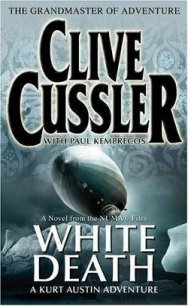The Whispering Land - Durrell Gerald (книги без регистрации бесплатно полностью TXT) 📗
Another creature that we saw very frequently was the Darwin's rhea,* the South American counterpart of the African ostrich. These birds were smaller than the rheas from Northern Argentina, more delicate in build and a more pearly grey in colour. They were generally in small flocks of five or six, and on many occasions we saw them moving through the scrub in conjunction with a flock of guanaco. I think one of the loveliest sights we saw on the peninsula was a herd of six guanaco with three graceful cinnamon-coloured babies, trotting slowly through the golden scrub in company with four Darwin's rheas, who were ushering along a swarm of twelve young, each dressed in its striped baby plumage, so that they looked like a line of tiny fat wasps running close to their parents' great feet. While the baby rheas were very sedate and orderly, like a school crocodile,* the baby guanacos were more exuberant and unruly, dancing about in amongst the adults, in exciting, daring and complicated gambols. One of them carried out such an intricate gambol that he humped into one of the adults and received a sharp kick in the stomach as punishment, after which he became very subdued and trotted quietly along behind his mother.
If undisturbed the rheas would pace along in a very regal manner. But, occasionally, we would come upon them when they were on the road and immediate panic would ensue. Instead of swerving off into the scrub, they would set off in a disorderly cluster down the road, running with the slightly effeminate grace of professional footballers. As we drove the Land-Rover closer and closer they would increase their speed, lowering their long necks groundwards, their feet coming up so high with each step that they almost touched what passes for a chin in a rhea. One I paced* in this manner ran six feet in front of the Land-Rover bonnet* for a distance of half a mile, averaging between twenty-five and thirty miles an hour. Eventually, when you had followed them like this for some considerable time, it would suddenly occur to them that they might be safer in the scrub. So they would put on a sudden burst of speed, open their pale wings in a graceful gesture, swerve off the road with a ballet-like grace and go bouncing away into the distance.
These rheas, like the common rhea of the north, have communal nests, that is to say several females lay their eggs in one nest. This is a mere scrape in the ground, lined with some dry grass or a few twigs, and you can find as many as fifty eggs in the one nest. As in the common rheas the male Darwin's rhea does the hard work of incubating the eggs and rearing the young when they hatch.

The highly-polished eggs are a fine green colour when just laid, but the side that is towards the sun soon fades, first to a dull mottled green, then yellowish, then to pale blue and finally to white. The rheas are so prolific that their eggs, and, to a large extent, their young, form an important item of diet for the predators of the peninsula.
Another creature which was very common, and which we frequently met on the roads, was the pinche or hairy armadillo. We saw them just as much by day as by night, but the time they were most frequently seen was towards evening in the rays of the setting sun, trotting to and fro over the road surfaces, sniffing vigorously, looking like strange clockwork toys, for their little legs moved so fast they were a mere blur beneath the shell. They are fairly thickly cloaked with long, coarse white hair, but I should not have thought that this would have provided them with any protection from the cold in the winter. I presume they must hibernate in the winter months, for there could be nothing for them to eat as the ground is frozen to a depth of several feet. All the ones we caught were covered with a tremendously thick layer of fat, and their pale pink, heavily wrinkled bellies were always bulging with food.

Their main diet must consist of beetles, their larvae, and the young and eggs of ground-nesting birds like the martineta, though sometimes they may come across a windfall* in the shape of a dead sheep or guanaco. Frequently they could be seen right down on the sea-shore, trotting briskly along the tide line, looking like small, rotund colonels on a Bournemouth sea-front,* imbibing the health-giving ozone, though they would occasionally spoil the illusion by stopping to have a light snack of a dead crab, a thing I have never seen a colonel do. Watching all this wild-life was, of course, fascinating, but it was still not bringing us any nearer to our objective, which was the elephant seals. We had, by now, covered quite a large area of the coast, without any success, and I began to think we were too late, and that the elephant seals were already drifting southwards towards Tierra del Fuego* and the Falkland Islands. But just when I had given up hope we discovered an elefanteria which no one had told us about, and then we only found it by luck. We had been walking along a fairly high cliff, pausing every quarter of a mile or so to examine the beach below us for signs or life. Presently, we rounded a small headland and came to a bay where the beach at the base of the cliff was covered in a tumbled mass of rocks.

Some of these rocks were so large that, from our vantage point, we could not tell what might be lying behind them, so, after searching along the cliff for a short way, we found a rough path which led us down to the shore, and made our way down to investigate.
The beach was of bright mottled shingle, each pebble sea-polished so that it shone in the evening sun. The boulders, some as large as a cottage, lay tumbled haphazardly along the beach, grey and fawn in colour. Some of them were so large and fretted* into such weird shapes by the wind and the sea, that it was a major operation scrambling over them, weighted down as we were with the cameras and equipment. We struggled through and over them for some distance, and then decided that what we needed was food. So, choosing a rock that had been moulded to make a natural seat, we sat down and unpacked our food and wine. I was convinced by then that there was not an elephant seal for miles, and I was thoroughly depressed and irritated with myself for having spent so much time on the fur seals.
"Well, we might find some tomorrow," said Jacquie soothingly, handing me a sandwich that appeared to have three-quarters of the Patagonian topsoil adhering to it.
"No," I said, viewing this sustenance with a jaundiced eye,* and refusing to be comforted, "they've gone south now. They've had their babies and left. If I hadn't spent so much time on those damned fur seals we might have found them."
"Well, it's your own fault," said Jacquie logically.
"I kept telling you that you had enough film of the fur seal, but you kept insisting we spend just one more day."
"I know," I said gloomily, "but they were such wonderful creatures, I couldn't tear myself away."
Marie, with the air of one who is making the best of a disaster,* seized a bottle of wine, and as the cork popped out of the bottle a large, slightly elongated and egg-shaped boulder some ten feet away gave a deep and lugubrious sigh, and opened a pair of huge, gentle, liquid-looking eyes of the deepest black, and gazed at us placidly.
Once it had thus revealed itself as an elephant seal, one wondered why one had ever thought it was anything else; and a close and excited scrutiny of the surrounding beach showed us that we were, in fact, sitting next to twelve of the gigantic beasts, which had all remained calmly sleeping while we had walked up to them, seated ourselves, and unpacked our food like trippers* at Margate. They so closely resembled the rocks amongst which they lay that I began to wonder how many other groups we had walked past in our search for them. After watching the fur seals, I had expected the elephant seal colony to be a much more boisterous and vivacious lot, whereas here they were, lying about the beach in attitudes of relaxed abandon,* displaying about as much boisterous-ness as could be expected from a convention of dropsy sufferers having a chess tournament in a Turkish bath.* We walked among the huge, snoring carcases, and by investigation we discovered that of the twelve animals there three were males, six were females, and three were well-grown young. The babies measured about six feet in length, and the females about twelve to fourteen feet. The real bulk was reserved for the males. Two of these were young bulls, each about eighteen feet in length, while the last was a fully adult bull, and measured twenty-one feet in length.



